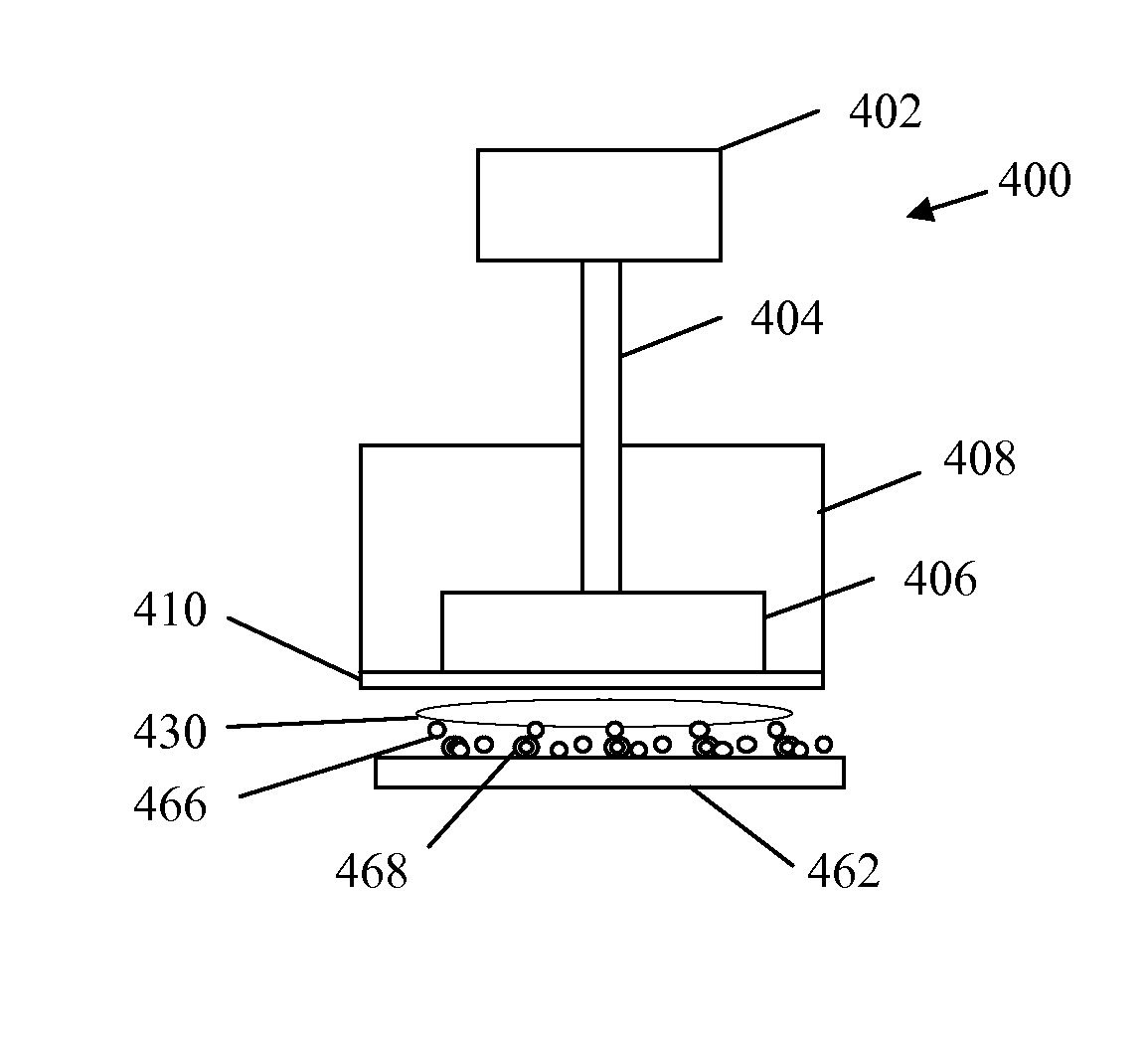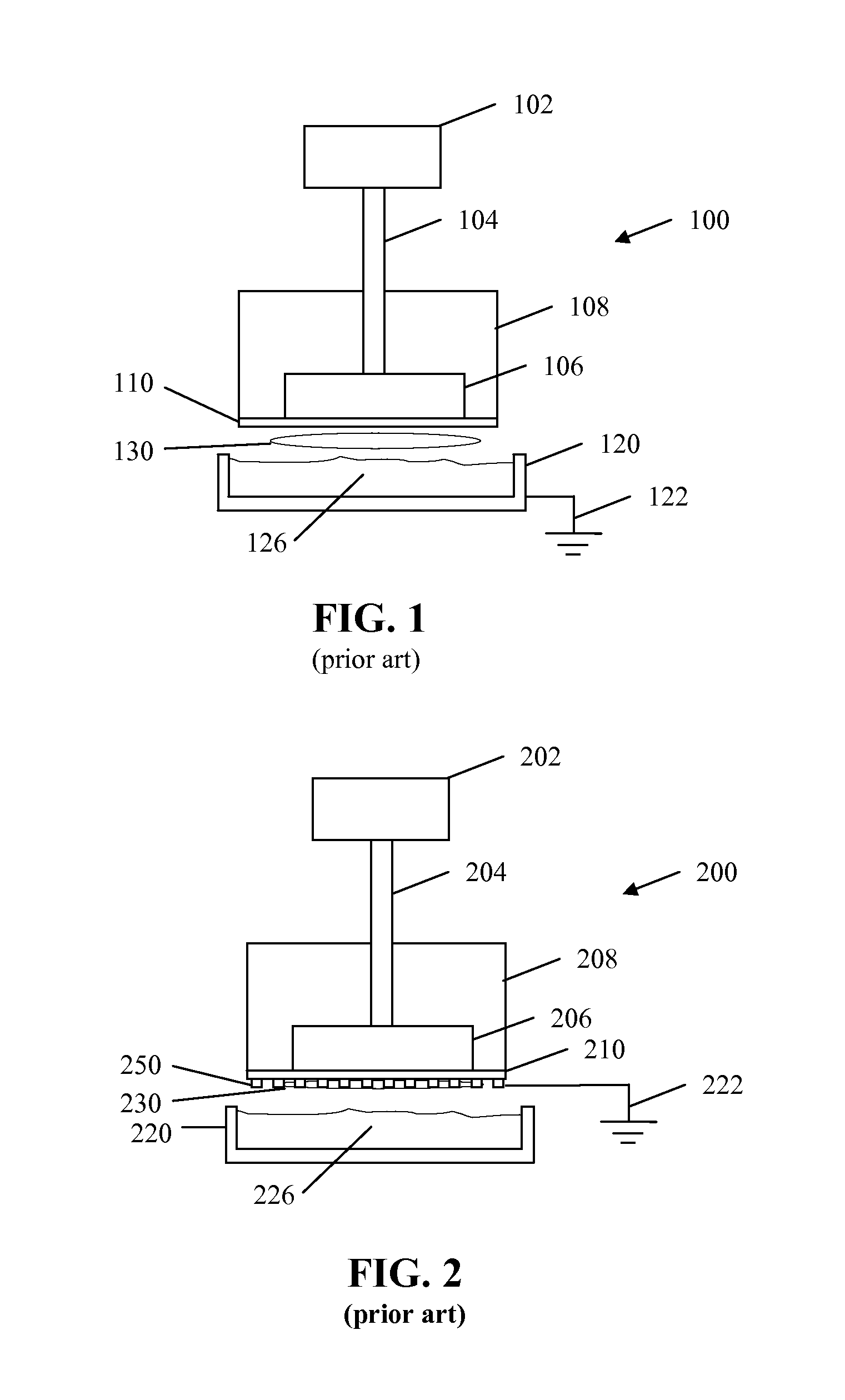Methods and solutions for killing or deactivating spores
a technology of spores and methods, applied in the field of methods and solutions for killing or deactivating spores, can solve the problems of difficult to kill or deactivate anthrax spores, anthrax is a frequently fatal disease, and anthrax spores are among the most difficult to kill or deactivate spores
- Summary
- Abstract
- Description
- Claims
- Application Information
AI Technical Summary
Benefits of technology
Problems solved by technology
Method used
Image
Examples
Embodiment Construction
[0020]Plasmas, or ionized gases, have one or more free electrons that are not bound to an atom or molecule. Plasmas may be generated using a variety of gases including, air, nitrogen, noble gases (He, Ar, Xe, Kr, etc), oxygen, carbon dioxide and mixtures thereof under an electric field. In addition, non-thermal plasmas provide high concentrations of energetic and chemically active species. They can operate far from thermodynamic equilibrium with high concentrations of active species and yet remain at a temperature that is substantially the same as room temperature. The energy from the free electrons may be transferred to additional plasma components creating additional ionization, excitation and / or dissociation. Fluid that is contacted with plasma becomes “activated” and is referred to herein as plasma activated fluid, and in some embodiments, the plasma activated fluid is plasma activated water.
[0021]In some embodiments, plasmas may contain superoxide anions [O2·−], which react wit...
PUM
 Login to View More
Login to View More Abstract
Description
Claims
Application Information
 Login to View More
Login to View More - R&D
- Intellectual Property
- Life Sciences
- Materials
- Tech Scout
- Unparalleled Data Quality
- Higher Quality Content
- 60% Fewer Hallucinations
Browse by: Latest US Patents, China's latest patents, Technical Efficacy Thesaurus, Application Domain, Technology Topic, Popular Technical Reports.
© 2025 PatSnap. All rights reserved.Legal|Privacy policy|Modern Slavery Act Transparency Statement|Sitemap|About US| Contact US: help@patsnap.com



